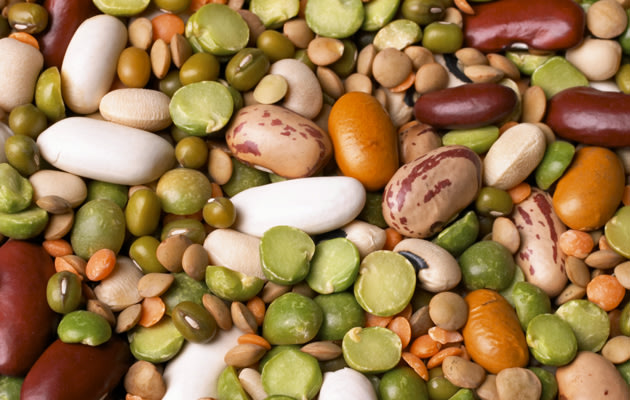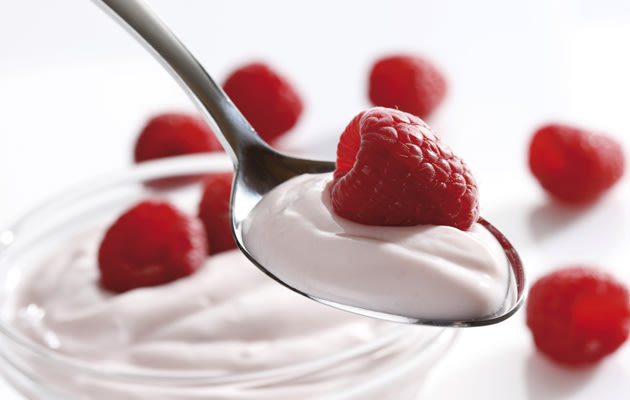The pH scale is from 0 -
14
| 0 1 2 3 4 5 6 7
healthy 8 9 10 11 12 13
14 |
Human blood pH should be slightly alkaline
( 7.35 - 7.45 ). Below or above this range means symptoms and disease. A pH of
7.0 is neutral. A pH below 7.0 is acidic. A pH above 7.0 is alkaline.
An acidic pH can occur from, an acid
forming diet, emotional stress, toxic overload, and/or immune reactions or any
process that deprives the cells of oxygen and other nutrients. The body will
try to compensate for acidic pH by using alkaline minerals. If the diet does
not contain enough minerals to compensate, a build up of acids in the cells will
occur.
An acidic balance will: decrease the
body's ability to absorb minerals and other nutrients, decrease the energy
production in the cells, decrease it's ability to repair damaged cells, decrease
it's ability to detoxify heavy metals, make tumor cells thrive, and make it more
susceptible to fatigue and illness. A blood pH of 6.9, which is only slightly
acidic, can induce coma and death.
The reason acidosis is more common in our
society is mostly due to the typical American diet, which is far too high in
acid producing animal products like meat, eggs and dairy, and far too low in
alkaline producing foods like fresh vegetables. Additionally, we eat acid
producing processed foods like white flour and sugar and drink acid producing
beverages like coffee and soft drinks. We use too many drugs, which are acid
forming; and we use artificial chemical sweetners like NutraSweet, Spoonful,
Sweet 'N Low, Equal, or Aspartame, which are
poison and extremely acid forming. One of the best things we can do to
correct an overly acid body is to clean up the diet and lifestyle.
To maintain health, the diet should consist
of 60% alkaline forming foods and 40% acid forming foods. To restore health,
the diet should consist of 80% alkaline forming foods and 20% acid forming
foods.
Generally, alkaline forming foods include:
most fruits, green vegetables, peas, beans, lentils, spices, herbs and
seasonings, and seeds and nuts.
Generally, acid forming foods include:
meat, fish, poultry, eggs, grains, and legumes.
Shifting Your pH Toward Alkaline...
This chart is for those trying to "adjust" their
body pH. The pH scale is from 0 to 14, with numbers below 7 acidic ( low on
oxygen ) and numbers above 7 alkaline. An acidic body is a sickness magnet.
What you eat and drink will impact where your body's pH level falls. Balance is
Key !!!
This chart is intended only as a general guide to
alkalizing and acidifying foods.
|
...ALKALINE FOODS...
|
|
...ACIDIC
FOODS...
|
ALKALIZING VEGETABLES
Alfalfa
Barley
Grass
Beet
Greens
Beets
Broccoli
Cabbage
Carrot
Cauliflower
Celery
Chard
Greens
Chlorella
Collard
Greens
Cucumber
Dandelions
Dulce
Edible
Flowers
Eggplant
Fermented Veggies
Garlic
Green Beans
Green
Peas
Kale
Kohlrabi
Lettuce
Mushrooms
Mustard Greens
Nightshade
Veggies
Onions
Parsnips (high
glycemic)
Peas
Peppers
Pumpkin
Radishes
Rutabaga
Sea
Veggies
Spinach, green
Spirulina
Sprouts
Sweet
Potatoes
Tomatoes
Watercress
Wheat Grass
Wild
Greens
ALKALIZING ORIENTAL VEGETABLES
Daikon
Dandelion
Root
Kombu
Maitake
Nori
Reishi
Shitake
Umeboshi
Wakame
ALKALIZING
FRUITS
Apple
Apricot
Avocado
Banana (high
glycemic)
Berries
Blackberries
Cantaloupe
Cherries, sour
Coconut,
fresh
Currants
Dates, dried
Figs,
dried
Grapes
Grapefruit
Honeydew
Melon
Lemon
Lime
Muskmelons
Nectarine
Orange
Peach
Pear
Pineapple
Raisins
Raspberries
Rhubarb
Strawberries
Tangerine
Tomato
Tropical
Fruits
Umeboshi Plums
Watermelon
ALKALIZING
PROTEIN
Almonds
Chestnuts
Millet
Tempeh (fermented)
Tofu
(fermented)
Whey Protein Powder
ALKALIZING
SWEETENERS
Stevia
ALKALIZING SPICES &
SEASONINGS
Chili Pepper
Cinnamon
Curry
Ginger
Herbs
(all)
Miso
Mustard
Sea Salt
Tamari
ALKALIZING
OTHER
Alkaline Antioxidant Water
Apple Cider Vinegar
Bee
Pollen
Fresh Fruit Juice
Green Juices
Lecithin Granules
Mineral
Water
Molasses, blackstrap
Probiotic Cultures
Soured Dairy
Products
Veggie Juices
ALKALIZING MINERALS
Calcium: pH
12
Cesium: pH 14
Magnesium: pH 9
Potassium: pH 14
Sodium: pH
14
Although it might seem that citrus fruits would have an acidifying
effect on the body, the citric acid they contain actually has an alkalinizing
effect in the system.
Note that a food's acid or alkaline forming
tendency in the body has nothing to do with the actual pH of the food itself.
For example, lemons are very acidic, however the end products they produce after
digestion and assimilation are very alkaline so, lemons are alkaline forming in
the body. Likewise, meat will test alkaline before digestion, but it leaves very
acidic residue in the body so, like nearly all animal products, meat is very
acid forming.
|
ACIDIFYING
VEGETABLES
Corn
Lentils
Olives
Winter
Squash
ACIDIFYING FRUITS
Blueberries
Canned or Glazed
Fruits
Cranberries
Currants
Plums**
Prunes**
ACIDIFYING
GRAINS, GRAIN PRODUCTS
Amaranth
Barley
Bran, oat
Bran,
wheat
Bread
Corn
Cornstarch
Crackers, soda
Flour, wheat
Flour,
white
Hemp Seed Flour
Kamut
Macaroni
Noodles
Oatmeal
Oats
(rolled)
Quinoa
Rice (all)
Rice
Cakes
Rye
Spaghetti
Spelt
Wheat Germ
Wheat
ACIDIFYING
BEANS & LEGUMES
Almond Milk
Black Beans
Chick Peas
Green
Peas
Kidney Beans
Lentils
Pinto Beans
Red Beans
Rice Milk
Soy
Beans
Soy Milk
White Beans
ACIDIFYING
DAIRY
Butter
Cheese
Cheese, Processed
Ice Cream
Ice
Milk
ACIDIFYING NUTS & BUTTERS
Cashews
Legumes
Peanut
Butter
Peanuts
Pecans
Tahini
Walnuts
ACIDIFYING ANIMAL
PROTEIN
Bacon
Beef
Carp
Clams
Cod
Corned
Beef
Fish
Haddock
Lamb
Lobster
Mussels
Organ
Meats
Oyster
Pike
Pork
Rabbit
Salmon
Sardines
Sausage
Scallops
Shellfish
Shrimp
Tuna
Turkey
Veal
Venison
ACIDIFYING
FATS & OILS
Avacado Oil
Butter
Canola Oil
Corn Oil
Flax
Oil
Hemp Seed Oil
Lard
Olive Oil
Safflower Oil
Sesame
Oil
Sunflower Oil
ACIDIFYING SWEETENERS
Carob
Corn
Syrup
Sugar
ACIDIFYING ALCOHOL
Beer
Hard
Liquor
Spirits
Wine
ACIDIFYING OTHER
FOODS
Catsup
Cocoa
Coffee
Mustard
Pepper
Soft
Drinks
Vinegar
ACIDIFYING DRUGS &
CHEMICALS
Aspirin
Chemicals
Drugs, Medicinal
Drugs,
Psychedelic
Herbicides
Pesticides
Tobacco
ACIDIFYING JUNK
FOOD
Beer: pH 2.5
Coca-Cola: pH 2
Coffee: pH 4
** These
foods leave an alkaline ash but have an acidifying effect on the
body. |
UNKNOWN:
There are several versions of the
Acidic and Alkaline Food chart to be found in different books and on the
Internet. The following foods are sometimes attributed to the Acidic side of
the chart and sometimes to the Alkaline side. Remember, you don't need to
adhere strictly to the Alkaline side of the chart, just make sure a good
percentage of the foods you eat come from that side. |
Brazil
Nuts
Brussel Sprouts
Buckwheat
Cashews
Chicken
Corn
Cottage
Cheese
Eggs
Flax Seeds
Green Tea
Herbal
Tea
Honey
Kombucha
Lima Beans |
|
Maple
Syrup
Milk
Nuts
Organic Milk (unpasteurized)
Potatoes,
white
Pumpkin Seeds
Quinoa
Sauerkraut
Soy Products
Sprouted
Seeds
Squashes
Sunflower Seeds
Tomatoes
Yogurt |
| * These
statements have not been evaluated by the Food and Drug Administration and are
not intended to diagnose, treat, cure, or prevent any disease; research is
ongoing. |
Here's a chart that ranks
foods from most alkaline to most acidic.
| Ranked Foods: Alkaline to Acidic |
Extremely Alkaline
Lemons, watermelon. |
Alkaline Forming
Cantaloupe, cayenne celery, dates, figs, kelp, limes, mango, melons,
papaya, parsley, seaweeds, seedless grapes (sweet), watercress.
Asparagus, fruit juices, grapes (sweet), kiwifruit, passionfruit, pears
(sweet), pineapple, raisins, umeboshi plums, and vegetable
juices. |
Moderately Alkaline
Apples (sweet), alfalfa sprouts, apricots, avocados, bananas (ripe),
currants, dates, figs (fresh), garlic, grapefruit, grapes (less sweet), guavas,
herbs (leafy green), lettuce (leafy green), nectarine, peaches (sweet), pears
(less sweet), peas (fresh, sweet), pumpkin (sweet), sea salt (vegetable).
Apples (sour), beans (fresh, green), beets, bell peppers, broccoli,
cabbage, carob, cauliflower, ginger (fresh), grapes (sour), lettuce (pale
green), oranges, peaches (less sweet), peas (less sweet), potatoes (with skin),
pumpkin (less sweet), raspberries, strawberries, squash, sweet Corn (fresh),
turnip, vinegar (apple cider). |
Slightly Alkaline
Almonds, artichokes (jerusalem), brussel sprouts, cherries, coconut
(fresh), cucumbers, eggplant, honey (raw), leeks, mushrooms, okra, olives
(ripe), onions, pickles (homemade), radishes, sea salt, spices, tomatoes
(sweet), vinegar (sweet brown rice).
Chestnuts (dry, roasted), egg yolks
(soft cooked), essene bread, goat's milk and whey (raw), mayonnaise (homemade),
olive oil, sesame seeds (whole), soy beans (dry), soy cheese, soy milk, sprouted
grains, tofu, tomatoes (less sweet), and yeast (nutritional
flakes). |
Neutral
Butter (fresh, unsalted), cream (fresh, raw), cow's milk and whey (raw),
margine, oils (except olive), and yogurt (plain). |
Moderately Acidic
Bananas (green), barley (rye), blueberries, bran, butter, cereals
(unrefined), cheeses, crackers (unrefined rye, rice and wheat), cranberries,
dried beans (mung, adzuki, pinto, kidney, garbanzo), dry coconut, egg whites,
eggs whole (cooked hard), fructose, goat's milk (homogenized), honey
(pasteurized), ketchup, maple syrup (unprocessed), milk (homogenized).
Molasses (unsulferd and organic), most nuts, mustard, oats (rye,
organic), olives (pickled), pasta (whole grain), pastry (whole grain and honey),
plums, popcorn (with salt and/or butter), potatoes, prunes, rice (basmati and
brown), seeds (pumpkin, sunflower), soy sauce, and wheat bread (sprouted
organic). |
Extremely Acidic
Artificial sweeteners, beef, beer, breads, brown sugar, carbonated soft
drinks, cereals (refined), chocolate, cigarettes and tobacco, coffee, cream of
wheat (unrefined), custard (with white sugar), deer, drugs, fish, flour (white,
wheat), fruit juices with sugar, jams, jellies, lamb.
Liquor, maple
syrup (processed), molasses (sulphured), pasta (white), pastries and cakes from
white flour, pickles (commercial), pork, poultry, seafood, sugar (white), table
salt (refined and iodized), tea (black), white bread, white vinegar (processed),
whole wheat foods, wine, and yogurt
(sweetened). |
| More Ranked Foods: Alkaline to
Acidic |
Highly Alkaline Forming
Foods
Baking soda, sea salt, mineral water, pumpkin seed, lentils,
seaweed, onion, taro root, sea vegetables, lotus root, sweet potato, lime,
lemons, nectarine, persimmon, raspberry, watermelon, tangerine, and
pineapple. |
Moderately Alkaline
Forming Foods
Apricots, spices, kambucha, unsulfured molasses, soy
sauce, cashews, chestnuts, pepper, kohlrabi, parsnip, garlic, asparagus, kale,
parsley, endive, arugula, mustard green, ginger root, broccoli, grapefruit,
cantaloupe, honeydew, citrus, olive, dewberry, carrots, loganberry, and
mango. |
Low Alkaline Forming
Foods
Most herbs, green tea, mu tea, rice syrup, apple cider
vinegar, sake, quail eggs, primrose oil, sesame seed, cod liver oil, almonds,
sprouts, potato, bell pepper, mushrooms, cauliflower, cabbage, rutabaga,
ginseng, eggplant, pumpkin, collard green, pear, avocado, apples (sour),
blackberry, cherry, peach, and papaya. |
Very Low Alkaline
Forming Foods
Ginger tea, umeboshi vinegar, ghee, duck eggs, oats,
grain coffee, quinoa, japonica rice, wild rice, avocado oil, most seeds, coconut
oil, olive oil, flax oil, brussel sprout, beet, chive, cilantro, celery, okra,
cucumber, turnip greens, squashes, lettuces, orange, banana, blueberry, raisin,
currant, grape, and strawberry. |
Very Low Acid Forming
Foods
Curry, koma coffee, honey, maple syrup, vinegar, cream,
butter, goat/sheep cheese, chicken, gelatin, organs, venison, fish, wild duck,
triticale, millet, kasha, amaranth, brown rice, pumpkin seed oil, grape seed
oil, sunflower oil, pine nuts, canola oil, spinach, fava beans, black-eyed peas,
string beans, wax beans, zucchini, chutney, rhubarb, coconut, guava, dry fruit,
figs, and dates. |
Low Acid Forming
Foods
Vanilla, alcohol, black tea, balsamic vinegar, cow milk, aged
cheese, soy cheese, goat milk, game meat, lamb, mutton, boar, elk, shell fish,
mollusks, goose, turkey, buckwheat, wheat, spelt, teff, kamut, farina, semolina,
white rice, almond oil, sesame oil, safflower oil, tapioca, seitan, tofu, pinto
beans, white beans, navy beans, red beans, aduki beans, lima beans, chard, plum,
prune and tomatoes. |
Moderately Acid Forming
Foods
Nutmeg, coffee, casein, milk protein, cottage cheese, soy
milk, pork, veal, bear, mussels, squid, chicken, maize, barley groats, corn,
rye, oat bran, pistachio seeds, chestnut oil, lard, pecans, palm kernel oil,
green peas, peanuts, snow peas, other legumes, garbanzo beans, cranberry, and
pomegranate. |
Highly Acid Forming
Foods
Tabletop sweeteners like (NutraSweet, Spoonful, Sweet 'N Low,
Equal or Aspartame), pudding, jam, jelly, table salt (NaCl), beer, yeast, hops,
malt, sugar, cocoa, white (acetic acid) vinegar, processed cheese, ice cream,
beef, lobster, pheasant, barley, cottonseed oil, hazelnuts, walnuts, brazil
nuts, fried foods, soybean, and soft drinks, especially the cola type. To
neutralize a glass of cola with a pH of 2.5, it would take 32 glasses of
alkaline water with a pH of 10. |
| A list of Acid /
Alkaline Forming Foods |
| Alkaline Forming Foods |
VEGETABLES
Garlic
Asparagus
Fermented
Veggies
Watercress
Beets
Broccoli
Brussel
sprouts
Cabbage
Carrot
Cauliflower
Celery
Chard
Chlorella
Collard
Greens
Cucumber
Eggplant
Kale
Kohlrabi
Lettuce
Mushrooms
Mustard
Greens
Dulce
Dandelions
Edible Flowers
Onions
Parsnips (high
glycemic)
Peas
Peppers
Pumpkin
Rutabaga
Sea
Veggies
Spirulina
Sprouts
Squashes
Alfalfa
Barley Grass
Wheat
Grass
Wild Greens
Nightshade Veggies |
FRUITS
Apple
Apricot
Avocado
Banana (high
glycemic)
Cantaloupe
Cherries
Currants
Dates/Figs
Grapes
Grapefruit
Lime
Honeydew
Melon
Nectarine
Orange
Lemon
Peach
Pear
Pineapple
All
Berries
Tangerine
Tomato
Tropical Fruits
Watermelon
PROTEIN
Eggs (poached)
Whey Protein Powder
Cottage
Cheese
Chicken Breast
Yogurt
Almonds
Chestnuts
Tofu
(fermented)
Flax Seeds
Pumpkin Seeds
Tempeh (fermented)
Squash
Seeds
Sunflower Seeds
Millet
Sprouted Seeds
Nuts |
OTHER
Apple Cider Vinegar
Bee Pollen
Lecithin
Granules
Probiotic Cultures
Green Juices
Veggies Juices
Fresh Fruit
Juice
Organic Milk
(unpasteurized)
Mineral Water
Alkaline
Antioxidant Water
Green Tea
Herbal Tea
Dandelion Tea
Ginseng
Tea
Banchi Tea
Kombucha
SWEETENERS
Stevia
Ki Sweet
SPICES/SEASONINGS
Cinnamon
Curry
Ginger
Mustard
Chili
Pepper
Sea Salt
Miso
Tamari
All Herbs
ORIENTAL VEGETABLES
Maitake
Daikon
Dandelion
Root
Shitake
Kombu
Reishi
Nori
Umeboshi
Wakame
Sea Veggies
|
|
| Acid Forming Foods |
FATS & OILS
Avocado Oil
Canola Oil
Corn
Oil
Hemp Seed Oil
Flax Oil
Lard
Olive Oil
Safflower Oil
Sesame
Oil
Sunflower Oil
FRUITS
Cranberries
GRAINS
Rice Cakes
Wheat
Cakes
Amaranth
Barley
Buckwheat
Corn
Oats
(rolled)
Quinoa
Rice (all)
Rye
Spelt
Kamut
Wheat
Hemp Seed
Flour
DAIRY
Cheese, Cow
Cheese,
Goat
Cheese, Processed
Cheese, Sheep
Milk
Butter |
NUTS & BUTTERS
Cashews
Brazil
Nuts
Peanuts
Peanut Butter
Pecans
Tahini
Walnuts
ANIMAL
PROTEIN
Beef
Carp
Clams
Fish
Lamb
Lobster
Mussels
Oyster
Pork
Rabbit
Salmon
Shrimp
Scallops
Tuna
Turkey
Venison
PASTA
(WHITE)
Noodles
Macaroni
Spaghetti
OTHER
Distilled Vinegar
Wheat Germ
Potatoes
|
DRUGS & CHEMICALS
Aspartame
Chemicals
Drugs,
Medicinal
Drugs, Psychedelic
Pesticides
Herbicides
ALCOHOL
Beer
Spirits
Hard
Liquor
Wine
BEANS & LEGUMES
Black
Beans
Chick Peas
Green Peas
Kidney Beans
Lentils
Lima
Beans
Pinto Beans
Red Beans
Soy Beans
Soy Milk
White
Beans
Rice Milk
Almond Milk
|
|
| More Ranked Foods:
Alkaline (pH) to Acidic (pH) |
|
Alkaline: Meditation, Prayer, Peace, Kindness & Love |
Acid: Overwork, Anger, Fear, Jealousy & Stress |
| Extremely Alkaline
Forming Foods - pH 8.5 to 9.0 |
Extremely Acid
Forming Foods - pH 5.0 to 5.5 |
9.0 Lemons 1, Watermelon 2
8.5 Agar Agar 3, Cantaloupe, Cayenne (Capsicum) 4,
Dried dates & figs, Kelp, Karengo,
Kudzu root, Limes,
Mango, Melons, Papaya, Parsley 5, Seedless grapes
(sweet), Watercress,
Seaweeds
Asparagus 6, Endive, Kiwifruit, Fruit juices 7, Grapes
(sweet), Passion fruit, Pears
(sweet), Pineapple,
Raisins, Umeboshi plum, Vegetable juices 8 |
5.0 Artificial sweeteners
5.5 Beef, Carbonated soft drinks
& fizzy drinks 38,
Cigarettes
(tailor made), Drugs, Flour (white, wheat)
39, Goat, Lamb, Pastries & cakes from white
flour,
Pork, Sugar (white) 40
Beer 34, Brown sugar 35,
Chicken, Deer, Chocolate,
Coffee 36, Custard with white sugar, Jams, Jellies,
Liquor 37, Pasta (white), Rabbit, Semolina,
Table
salt refined and iodized, Tea black, Turkey, Wheat
bread, White rice, White vinegar (processed). |
| Moderate Alkaline -
pH 7.5 to 8.0 |
Moderate Acid - pH 6.0 to 6.5 |
8.0 Apples (sweet), Apricots,
Alfalfa sprouts 9,
Arrowroot, Flour
10, Avocados, Bananas (ripe),
Berries, Carrots, Celery, Currants, Dates & figs
(fresh), Garlic
11, Gooseberry, Grapes (less
sweet),
Grapefruit, Guavas, Herbs (leafy green), Lettuce
(leafy green), Nectarine, Peaches (sweet), Pears
(less sweet), Peas
(fresh sweet), Persimmon,
Pumpkin (sweet), Sea salt (vegetable)
12, Spinach
7.5 Apples (sour), Bamboo shoots,
Beans (fresh green),
Beets, Bell Pepper, Broccoli, Cabbage;Cauli,
Carob
13, Daikon, Ginger (fresh),
Grapes (sour), Kale,
Kohlrabi, Lettuce (pale green), Oranges,
Parsnip,
Peaches (less sweet), Peas (less sweet), Potatoes
& skin, Pumpkin (less sweet), Raspberry, Sapote,
Strawberry,
Squash 14, Sweet corn (fresh),
Tamari
15, Turnip, Vinegar (apple
cider) 16 |
6.0 Cigarette tobacco (roll your
own), Cream of Wheat
(unrefined), Fish, Fruit juices with sugar,
Maple
syrup (processed), Molasses (sulphured), Pickles
(commercial), Breads (refined) of corn, oats, rice &
rye, Cereals
(refined) eg weetbix, corn flakes,
Shellfish, Wheat germ, Whole Wheat
foods 32,
Wine 33, Yogurt (sweetened)
6.5 Bananas (green), Buckwheat,
Cheeses (sharp),
Corn & rice breads, Egg whole (cooked
hard),
Ketchup, Mayonnaise, Oats, Pasta (whole grain),
Pastry (wholegrain & honey), Peanuts, Potatoes
(with no skins),
Popcorn (with salt & butter), Rice
(basmati), Rice (brown), Soy
sauce (commercial),
Tapioca, Wheat bread (sprouted
organic) |
| Slightly Alkaline to
Neutral pH 7.0 |
Slightly Acid to Neutral pH 7.0 |
7.0 Almonds 17, Artichokes (Jerusalem), Barley-Malt
(sweetener-Bronner), Brown Rice Syrup, Brussel
Sprouts, Cherries,
Coconut (fresh), Cucumbers, Egg
plant, Honey (raw), Leeks, Miso,
Mushrooms, Okra,
Olives ripe 18,
Onions, Pickles 19, (home made),
Radish, Sea salt 20, Spices 21, Taro, Tomatoes
(sweet), Vinegar (sweet
brown rice), Water Chestnut
Amaranth, Artichoke (globe),
Chestnuts (dry
roasted), Egg yolks (soft cooked), Essene bread
22,
Goat's milk and whey (raw)
23, Horseradish,
Mayonnaise (home
made), Millet, Olive oil, Quinoa,
Rhubarb, Sesame seeds (whole)
24, Soy beans
(dry), Soy cheese,
Soy milk, Sprouted grains 25,
Tempeh, Tofu, Tomatoes (less sweet), Yeast
(nutritional
flakes) |
7.0 Barley malt syrup, Barley,
Bran, Cashews, Cereals
(unrefined with honey-fruit-maple syrup),
Cornmeal,
Cranberries 30, Fructose,
Honey (pasteurized),
Lentils, Macadamias, Maple syrup
(unprocessed),
Milk (homogenized) and most processed dairy
products, Molasses (unsulphered organic) 31,
Nutmeg, Mustard, Pistachios, Popcorn
& butter
(plain), Rice or wheat crackers (unrefined),
Rye
(grain), Rye bread (organic sprouted), Seeds
(pumpkin
& sunflower), Walnuts
Blueberries, Brazil nuts, Butter
(salted), Cheeses
(mild & crumbly) 28, Crackers (unrefined rye),
Dried beans
(mung, adzuki, pinto, kidney,
garbanzo) 29, Dry coconut, Egg whites, Goats
milk
(homogenized), Olives (pickled), Pecans,
Plums 30, Prunes 30,
Spelt |
| Neutral pH
7.0 Ñ Healthy Body Saliva pH Range is between 6.4 to 6.8 (on your pH test
strips) |
Butter (fresh
unsalted), Cream (fresh and raw), Margarine 26, Milk (raw cow's) 27, Oils (except olive),
Whey (cow's), Yogurt
(plain) |
NOTE: Match with the numbers
above.
1. Excellent for
EMERGENCY SUPPORT for colds, coughs, sore throats, heartburn, and gastro
upsets.
2. Good for a yearly fast. For
several days eat whole melon, chew pips well and eat also. Super alkalizing
food.
3. Substitute for gelatin, more
nourishing.
4. Stimulating,
non-irritating body healer. Good for endocrine system.
5. Purifies kidneys.
6. Powerful acid reducer detoxing to produce acid urine
temporarily, causing alkalinity for the long term.
7. Natural sugars give alkalinity. Added sugar causes
juice to become acid forming.
8. Depends
on vege's content and sweetness.
9.
Enzyme rich, superior digestibility.
10.
High calcium content. Cornflour substitute.
11. Elevates acid food 5.0 in alkaline
direction.
12. Vegetable content raises
alkalinity.
13. Substitute for coca;
mineral rich.
14. Winter squash rates 7.5.
Butternut and sweeter squash rates 8.0.
15.
Genuine fermented for 11Ú2 years otherwise 6.0.
16. Raw unpasteurized is a digestive aid to increase
HCL in the stomach. 1 tablespoon, + honey & water before meals.
17. Soak 12 hours, peel skin to eat.
18. Sundried, tree ripened, otherwise 6.0.
19. Using sea salt and apple cider vinegar.
20. Contains sea minerals. Dried at low
temperatures.
21. Range from 7.0 to
8.0.
22. Sprouted grains are more
alkaline. Grains chewed well become more alkaline.
23. High sodium to aid digestion.
24. High levels of utilizable calcium. Grind before
eating.
25. Alkalinity and digestibility
higher.
26. Heating causes fats to harden
and become indigestible.
27. High mucus
production.
28. Mucus forming and hard to
digest.
29. When sprouted dry beans rate
7.0.
30. Contain acid-forming benzoic and
quinic acids.
31. Full of iron.
32. Unrefined wheat is more alkaline.
33. High quality red wine, no more than 4 oz. daily to
build blood.
34. Good quality, well brewed
- up to 5.5. Fast brewed beers drop to 5.0.
35. Most are white sugars with golden syrup
added.
36. Organic, fresh ground-up to
5.5.
37. Cheaper brands drop to 5.0, as
does over-indulgence.
38. Leaches
minerals.
39. Bleached - has no
goodness.
40. Poison! Avoid
it.
41. Potential cancer agent.
Over-indulgence may cause partial
blindness. |
Note:
No claims are made regarding the therapeutic use of this product... Plus,
These statements have not been evaluated by the Food & Drug
Administration.
These products are not intended to diagnose, treat, cure or
prevent any disease.
|





